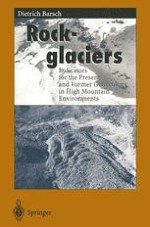1996 | Buch
Rockglaciers
Indicators for the Present and Former Geoecology in High Mountain Environments
verfasst von: Professor Dr. Dietrich Barsch
Verlag: Springer Berlin Heidelberg
Buchreihe : Springer Series in Physical Environment
Enthalten in: Professional Book Archive
